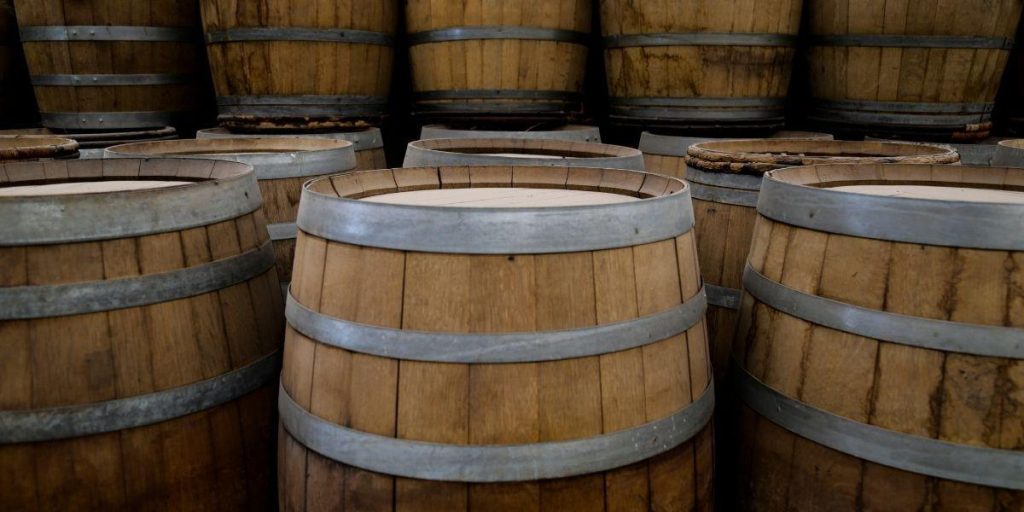What Equipment Do You Need to Make Whiskey Commercially?

From kettle size to still type, making whiskey commercially requires quite a few tools and gadgets but it doesn’t have to be a complicated process! Depending on your personal preferences and needs, here is a quick rundown of typical commercial whiskey distilling equipment that could put your mind at ease.
We know that taking your production to the commercial level can be a stressful task but we’re here to help. We suggest you first calculate your fixed costs to confirm how to size your commercial whiskey distilling equipment. Starting in the 250-to-300-gallon range first and then downsizing (if need be) is the best way to go about things. You can always use bigger equipment to make smaller batches, but you will struggle to do larger batches with the smaller equipment. Additionally, larger volumes are usually a better value on a per liter/gallon basis.
Commercial Whiskey Distilling Equipment: What’s Needed
- Tank – For a commercial distillery, starting with a standard-sized 250-gallon/1000-Liter tank would be ideal. Anything smaller and you will likely make enough money to cover your fixed costs, but not much more. Distilling really is about exploiting economies of scale. We accept custom orders to meet any tank fabrication you want
- Mash Tun – A mash tun is a crucial vessel in the craft distillery business, the mash tun aids in the mashing process to convert starch into sugar, making fermentation possible. Though not a requisite, we would recommend sizing your mash tun at least as large as your distillation kettle.
- Fermenter – Fermenters are an important element to the craft whiskey-making process, maintaining optimal conditions for micro-organism growth. StillDragon offers a variety of single-walled or cooling-jacketed fermenters, both made of durable, high-quality stainless steel.
- Kettle – Choosing the perfect kettle starts with deciding your heating method; check out the blog post titled “To Steam or Not to Steam“ to learn more about heating the kettle. Once you’ve decided on the heating method, you can move on to size and whether you want a copper top kettle or stainless steel. For creating a flavorful whiskey, a 1000L (264-gallon working volume) will give you about 26 gallons of barrel strength (or the like) distillate.
- Still – Depending on whether you plan on staying traditional or isolating more flavors, you need to decide between a pot still and a reflux column. A pot still consists of a big pot (kettle), swan neck (or Lyne arm), and condenser. StillDragon copper helmets can be used modularly on our kettles to replicate the more traditional pot still. We stock the whiskey helmets but they can be customized to your specific needs. On the other hand, the StillDragon reflux column configuration is a column that utilizes copper plates and caps, a Lyne arm/bend, and condensers. StillDragon’s reflux configurations use a cooling management system that requires two condensers: a partial reflux condenser (dephlegmator) and a product condenser. The reflux column works so that the more distilling plates you have, the more distillation cycles the vapor goes through creating purer alcohol. The opposite can be said with fewer plates. Fewer plates equal more flavorful alcohol.

- Ancillary Parts – Other items you’ll typically see on your quote from StillDragon in order to complete your still include a proofing parrot with hydrometer/alcometer (to measure your vapor/liquid and your ABV), standard tri clamps or high-pressure clamps (better for bigger systems and still keep everything modular, which is great for cleaning and customizing), gaskets, and push connects with adapters (for water hosing attachments – the adapters make things easier to clean).
Aging
Now, I know this isn’t “equipment” but barrels/casks are, obviously, extremely important for whiskey flavor. We recommend that you get your product into barrels immediately – unless you plan on making a white whiskey, of course. According to WhiskeyAdvocate.com, there are:
7 Types of Barrels/Casks Used to Finish Whiskey
1. Wood Finish
- Wood: Virgin American oak, Irish oak, Japanese oak, etc.
- Typical flavors: Spice, vanilla, sweet oak
2. Wine Finish
- Wood: Typically French oak
- Typical flavors: Varies according to wine. Sauternes has notes of fresh bread, tart au citron, and crème caramel. Bordeaux gives red berry, cherry, and plum.
3. Port Finish
- Wood: Usually French oak
- Typical flavors: Berry fruits, red currant, sultana
4. Sherry Finish
- Wood: European or American oak
- Typical flavors: Dates, walnut, sultana
5. Madeira Finish
- Wood: Portuguese oak
- Typical flavors: Sweet fruits, figs, spice
6. Rum Finish
- Wood: American oak
- Typical flavors: Molasses, vanilla, tropical fruits
7. Beer Finish
- Wood: American oak
- Typical flavors: Sweetness, malt, creamy
Feel free to shoot us an email info@stilldragon.com or give us a call at (561) 845-8009 anytime if you’re interested in starting up a whiskey distillery or taking your current distillery to the next level! We’ll be happy to help you out.